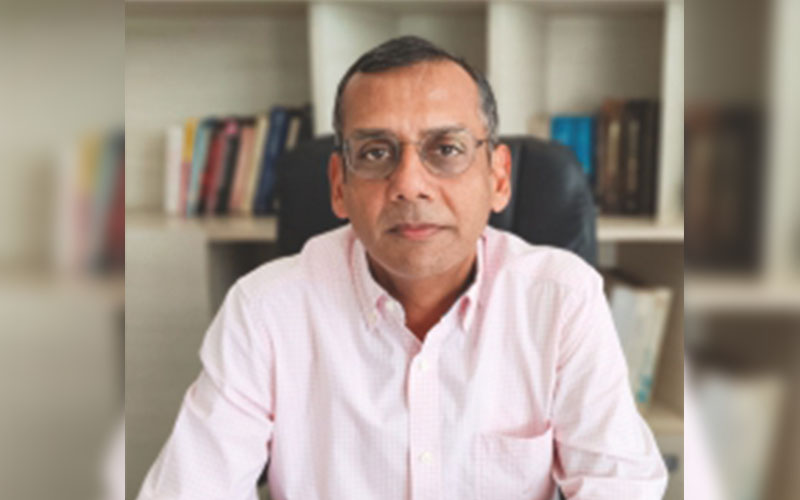Krofta Engineering Limited began operations in 1983 as a manufacturer for Dissolved Air Floatation (DAF) units. Since then, it has added multiple products to its portfolio and made technical collaborations with several companies. Today, it is a leader in water and wastewater treatment systems, offering global solutions for water and wastewater treatment, recovery of resources and energy generation. With over 12,000 installations worldwide and four decades of excellence, we continue to empower industries with innovative water treatment solutions, Mr. Raghvendra Khaitan, the company’s Managing Director, informs Paper Mart in an exclusive interaction.

Paper Mart: Please discuss some of the solutions you cater to enhance water efficiency of pulp and paper mills in India.
Raghvendra Khaitan: Krofta Engineering offers an array of solutions to enhance water efficiency in pulp and paper mills. Our commitment to environmental sustainability and water management contributes significantly to enhancing water efficiency in the pulp and paper industry. Some of the ways we empower the industry are:
Dissolved Air Flotation (DAF) Technology: The world-leading technology efficiently removes suspended solids, oils, and other contaminants from wastewater. Our DAF systems, including models like Megacell, have been successful in paper mills across India and beyond.
Anaerobic Treatment Reactors: The recently launched reactors are crucial in paper mills due to the prevalence of high levels of Chemical Oxygen Demand (COD). They allow effective treatment of wastewater, enabling mills to reuse and recycle water while also managing sludge.
Complete ETP Solutions: Krofta provides comprehensive Effluent Treatment Plants (ETPs) and Wastewater Treatment Plants (WWTPs) specifically tailored for paper mills. Our solutions make the water fit for reuse, including anaerobic systems that generate bio-gas. Additionally, we offer primary treatment DAF systems and efficient sludge handling solutions.
Watch: Top Paper Companies 2023
PM: Kindly elaborate how your solutions have helped mills achieve their water efficiency target.
RK: Krofta Engineering has been instrumental in assisting pulp and paper mills in India to achieve their water efficiency targets. Some of the solutions that have helped mills achieve their targets are:
Dissolved Air Flotation (DAF) Technology: The world-leading technology plays a crucial role in treating wastewater efficiently. The DAF systems remove suspended solids, oils, and other contaminants from water, ensuring cleaner effluents. These systems have been widely adopted by paper mills to enhance water quality and meet environmental standards.
Anaerobic Reactors: Krofta recognizes the importance of anaerobic treatment for paper mills, especially where Chemical Oxygen Demand (COD) values are high. Anaerobic reactors help break down organic matter in wastewater, producing biogas and reducing the overall environmental impact.
MBBR (Moving Bed Biofilm Reactor): The latest technology provides an effective way forward for treating wastewater in paper mills. MBBR systems use biofilm carriers to enhance biological treatment, improving water quality and minimizing resource consumption.
Sludge Dewatering Solutions: The technology allows mills to dewater their sludge efficiently, reducing waste volume and facilitating proper disposal. By optimizing sludge management, paper mills can achieve better water efficiency and minimize environmental footprint.
With over 12,000 installations worldwide and four decades of excellence, we continue to empower industries with innovative water treatment solutions. Our commitment to sustainability and environmental stewardship makes them a valuable partner for the pulp and paper industry for achieving water efficiency goals in Indian paper mills.
Pulp and paper mills will increasingly focus on superior effluent discharge monitoring. This involves maintaining high-quality effluent leaving the mill while using lower-quality influent water. So striking a balance between effluent quality requirements and closed-loop systems will be essential.
PM: Who are your clients? What factors do you usually identify before collaborating with them?
RK: Our clients, all over the country and overseas, are across the spectrum of the pulp and paper industry. When Krofta Engineering provides solutions to clients in the pulp and paper industry, several crucial factors come into play: Environmental regulations, protection of water bodies, community health and livelihood, corporate social responsibility, resource conservation, process optimization and long-term viability.
PM: Please walk us through your recent innovations, and what impacts have they created?
RK: Krofta Engineering has been at the forefront of innovation in the pulp and paper industry. Some of our recent advancements are:
Megacell Technology: An advanced Dissolved Air Flotation (DAF) technology. This cutting-edge solution offers several benefits: Higher Throughput: Megacell allows increased processing capacity; Lower Power Consumption: It’s designed for energy efficiency; and Compact Installation: The flexibility to be installed in tight spots within paper mill premises.
Anaerobic Treatment Reactors: Recognizing the prevalence of high levels of Chemical Oxygen Demand (COD) in paper mills, Krofta has developed anaerobic treatment reactors. These reactors play a crucial role in treating wastewater effectively.
Maximizing process water reuse is crucial. Techniques like dissolved air flotation (DAF) can enhance process water clarification, allowing mills to recycle more water for dilution activities. Replacing fresh water with process water can significantly reduce overall water consumption.
Fiber Fractionation: The technology enables segregation of fibres based on length, maximizing the capture of valuable longer fibres in whitewater streams, and thus contributing to efficient papermaking processes.
Raw Water Clarification: Krofta continues to enhance traditional raw water clarification processes, ensuring optimal water quality for both process and boiler feedwater applications.
White Water Clarification: Krofta DAFs have served as reliable save-alls for whitewater clarification in paper mills for over four decades. These systems contribute to efficient water management.
Also Read: Sidhu Engineering Works: “Paper Mills Can Reduce 90 Percent Water Consumption By Using Our Technology”
PM: What is your take on the future water efficiency of mills, and where do you see yourself in this?
RK: The future of water management in the pulp and paper industry is a critical concern, and it will centre around these key aspects:
Water Use and Reuse: Maximizing process water reuse is crucial. Techniques like dissolved air flotation (DAF) can enhance process water clarification, allowing mills to recycle more water for dilution activities. Replacing fresh water with process water can significantly reduce overall water consumption.
Effluent Discharge Monitoring: Pulp and paper mills will increasingly focus on superior effluent discharge monitoring. This involves maintaining high-quality effluent leaving the mill while using lower-quality influent water. So striking a balance between effluent quality requirements and closed-loop systems will be essential.
Sustainability and Responsibility: Water scarcity is a global challenge. Industry (including pulp and paper) accounts for 12% of global water withdrawals. By 2030, an estimated 1.6 billion people will lack safely managed drinking water services, emphasizing the urgency of responsible water stewardship. In an ideal future, all pulp and paper mills would be 100% closed-loop systems, minimizing their impact on freshwater resources.
Remember, addressing water efficiency is not about taking giant leaps; it’s about making incremental improvements—one step at a time!



